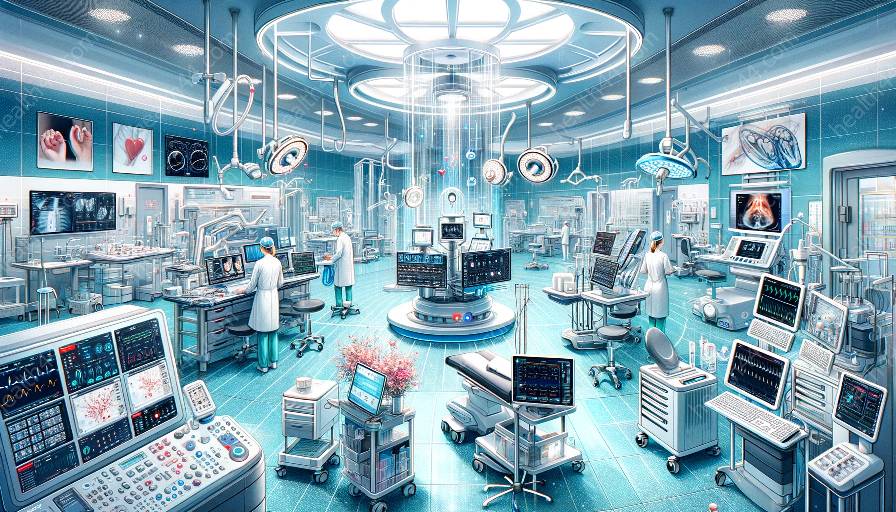As the field of bioengineering continues to advance, it has the potential to revolutionize traditional medical device sterilization methods, addressing their limitations and paving the way for innovative solutions in the field. This topic cluster will explore the impact of bioengineering on medical devices and how it can overcome the challenges presented by current sterilization techniques.
The Limitations of Traditional Medical Device Sterilization Methods
Traditional medical device sterilization methods, such as autoclaving, ethylene oxide gas sterilization, and gamma irradiation, have been widely used in healthcare settings. However, these methods come with certain limitations that can impact the efficacy and safety of medical devices.
One major limitation is the potential for material degradation. Many medical devices are made of polymers, metals, and other materials that may be sensitive to traditional sterilization methods, leading to degradation and potential compromise of the device's performance.
Moreover, these methods may not be suitable for all types of medical devices, particularly those with complex designs or components that are difficult to access. As a result, some devices may not be effectively sterilized using traditional methods, posing a risk of infection and other complications to patients.
Bioengineering Innovations for Sterilization
Bioengineering offers a promising avenue for addressing the limitations of traditional medical device sterilization methods. By integrating principles of biology, engineering, and material science, bioengineers are developing innovative techniques to ensure the safety and efficacy of medical devices.
Biocompatible Materials and Coatings
One area of focus in bioengineering is the development of biocompatible materials and coatings that are inherently resistant to microbial growth. By engineering surfaces at the nanoscale to minimize adhesion of microorganisms, bioengineers can create medical devices that are easier to sterilize and less prone to contamination.
Non-Thermal Sterilization Technologies
Traditional sterilization methods often rely on thermal energy, which can be detrimental to the properties of certain materials. Bioengineers are exploring non-thermal sterilization technologies, such as cold plasma and ultraviolet light, to effectively sterilize medical devices without compromising their structural integrity.
- Using Cold Plasma: Cold plasma technology utilizes ionized gases to kill microorganisms without generating significant heat, making it a promising method for sterilizing temperature-sensitive medical devices.
- Harnessing Ultraviolet Light: Ultraviolet (UV) light has antimicrobial properties and can be utilized to disinfect medical devices without the need for high temperatures, offering a gentle yet effective sterilization approach.
Advanced Sterilization Techniques
Advancements in bioengineering have also led to the development of advanced sterilization techniques that are tailored to specific types of medical devices. These techniques can target hard-to-reach areas and intricate components, ensuring thorough sterilization without compromising the device's functionality.
Examples of advanced sterilization techniques include:
- Low-Temperature Sterilization: Using low-temperature methods, such as vaporized hydrogen peroxide or ozone sterilization, to safely and effectively sterilize heat-sensitive medical devices.
- Adaptive Sterilization Systems: Adaptive systems that adjust sterilization parameters based on the unique features of each medical device, optimizing the sterilization process for different device designs and materials.
Implications for Medical Device Design and Manufacturing
The impact of bioengineering on medical device sterilization extends beyond the realm of sterilization techniques alone. It is influencing how medical devices are designed and manufactured, with a focus on integrating sterilization considerations into the early stages of product development.
By incorporating bioengineering principles into the design process, medical device manufacturers can create devices that are inherently resistant to contamination and compatible with advanced sterilization methods. This proactive approach not only enhances the safety of medical devices but also streamlines the sterilization process, reducing the risk of errors and ensuring consistent quality.
Regulatory and Safety Considerations
With the introduction of bioengineered sterilization methods, regulatory bodies and healthcare institutions are evaluating the safety, effectiveness, and compatibility of these innovative approaches. Bioengineered sterilization techniques must undergo rigorous testing and validation to ensure compliance with industry standards and regulatory requirements.
Moreover, the integration of bioengineered sterilization methods into healthcare facilities necessitates training and education for healthcare professionals to ensure proper implementation and maintenance of these technologies. This underscores the importance of collaboration between bioengineers, healthcare providers, and regulatory agencies to facilitate the seamless adoption of advanced sterilization techniques.
Conclusion
As bioengineering continues to evolve, it presents compelling solutions to address the limitations of traditional medical device sterilization methods. By leveraging innovative materials, non-thermal sterilization technologies, and advanced techniques, bioengineers are redefining the standards of medical device sterilization and fostering a safer environment for patients and healthcare providers.
Incorporating bioengineering principles into the realm of medical devices holds the potential to create a paradigm shift in sterilization practices, ultimately improving patient outcomes and shaping the future of healthcare.


